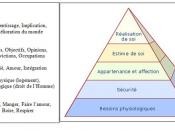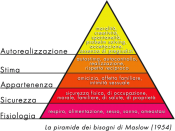Introduction
Over the years, numerous theories have been proposed attempting to capture the various sources of motivation energizing individual behavior. These theories all propose a limited set of motivational sources, some arranged in a hierarchy, other viewed as developmental stages and still others theorizing no basic process of transition from one source to another.
In this document, our group will describe the different theories on employee motivation and describe how our chosen organization, Xxx, modeled its people's strategy around the basic principles of Frederick Herzberg's Theory.
The Acquired-needs Theory
In his acquired-needs theory, David McClelland proposed that an individual's specific needs are acquired over time and are shaped by one's life experiences. Most of these needs can be classed as either achievement, affiliation, or power. A person's motivation and effectiveness in certain job functions are influenced by these three needs (McClelland, p.4). McClelland's theory sometimes is referred to, as the three need theory.
People with a high need for achievement (nAch) seek to excel and possess the desire or drive to excel in whatever one does. It is the inner urge to do things better and better, or more and more efficiently than before; to strive constantly, to achieve self-set standards. (Schermerhorn, p. 112). Achievers avoid low-risk situations because the easily attained success is not a genuine achievement. In high-risk projects, achievers see the outcome as one of chance rather than one's own effort. Achievers need regular feedback in order to monitor the progress of their achievements. They prefer either to work alone or with other high achievers.
Those with a high need for affiliation (nAff) need harmonious relationships with other people and need to feel accepted by other people (Schermerhorn, p. 112). They desire or need to be liked and accepted by others. It is the drive to form...



Good
This essay is not about the application of motivational theories. It is a very good essay on Motivational theories.
11 out of 11 people found this comment useful.